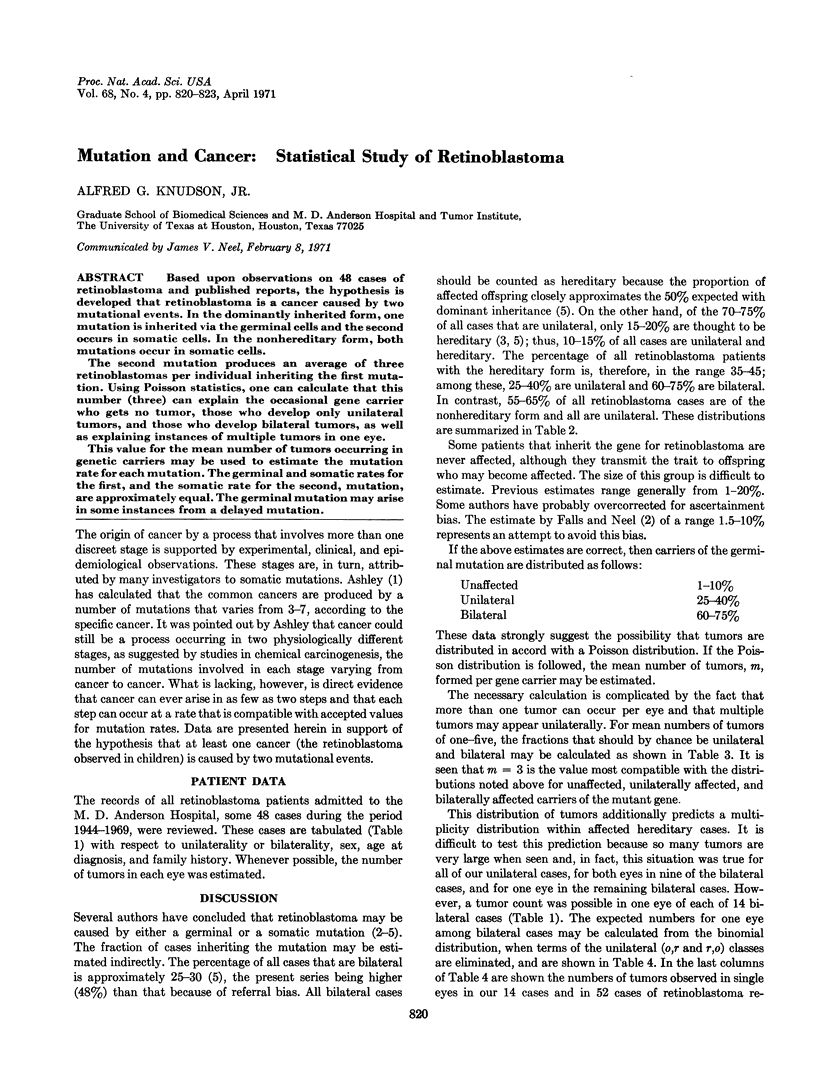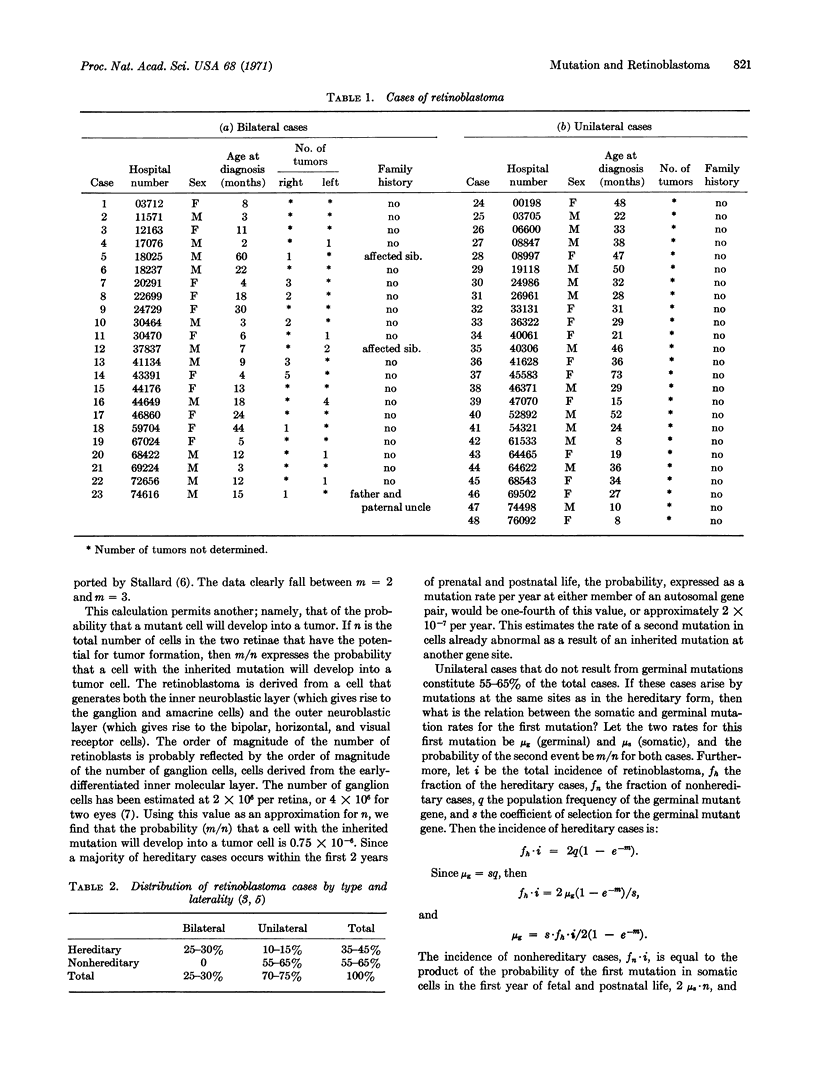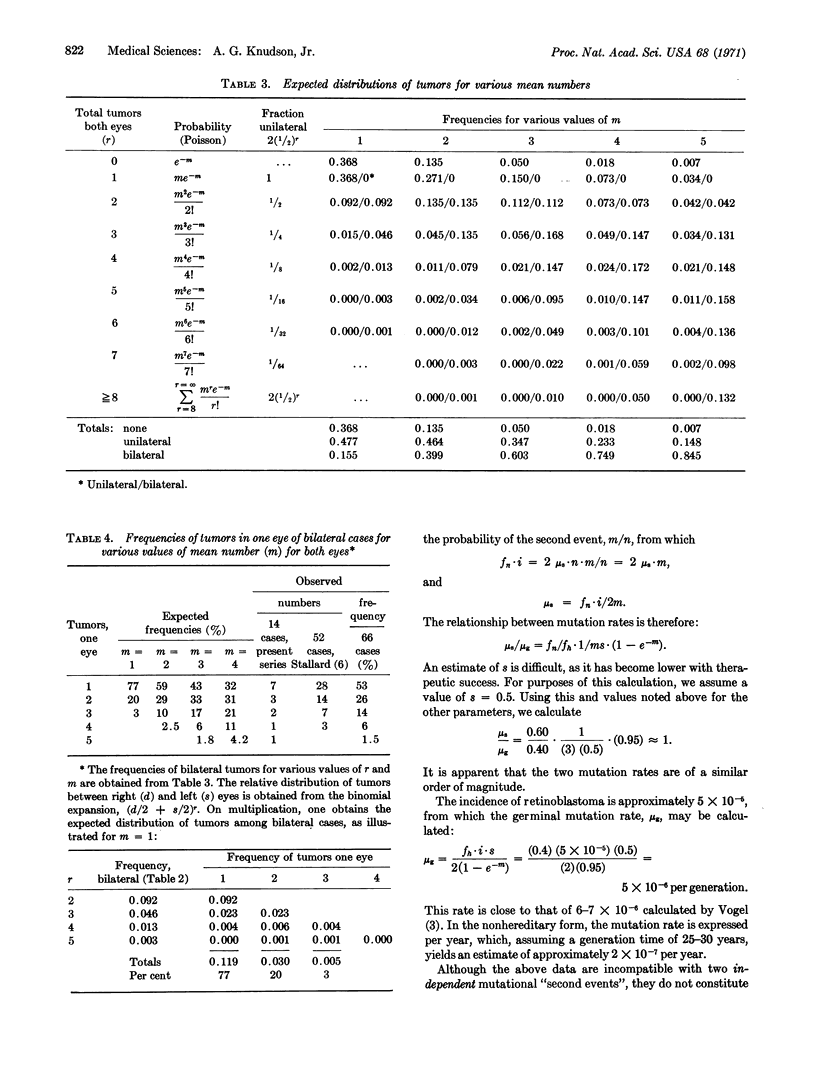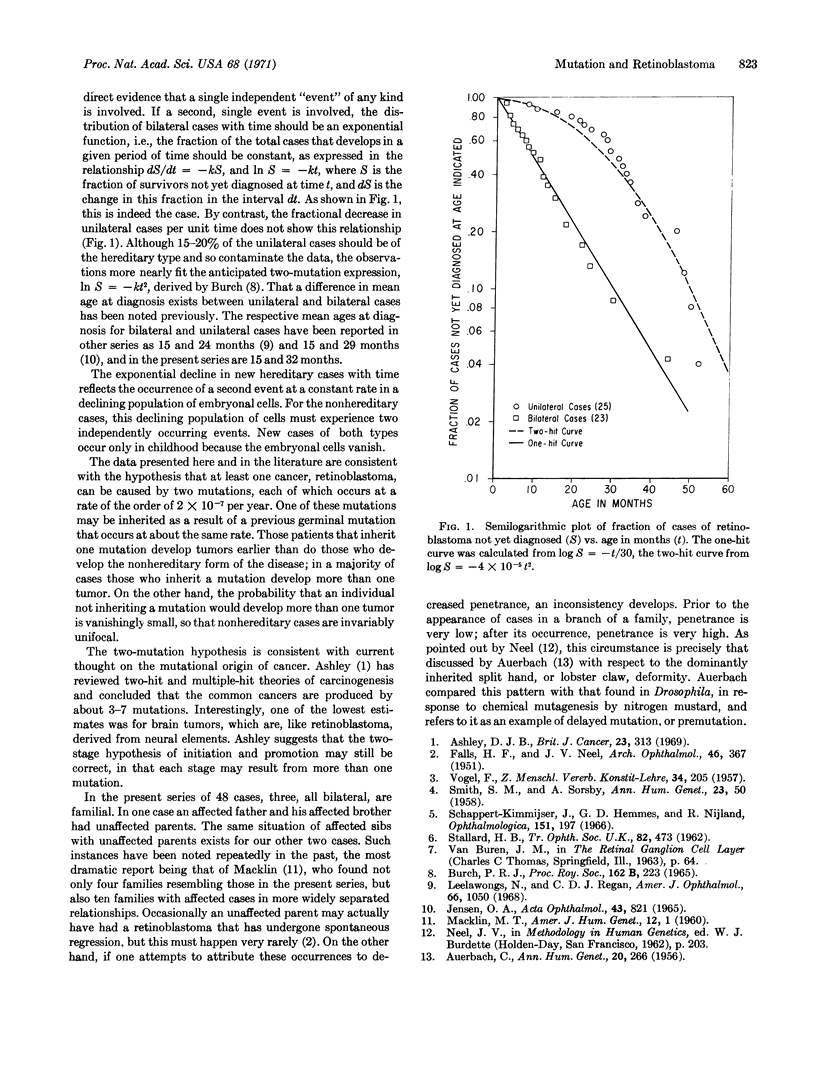Abstract
Based upon observations on 48 cases of retinoblastoma and published reports, the hypothesis is developed that retinoblastoma is a cancer caused by two mutational events. In the dominantly inherited form, one mutation is inherited via the germinal cells and the second occurs in somatic cells. In the nonhereditary form, both mutations occur in somatic cells.
The second mutation produces an average of three retinoblastomas per individual inheriting the first mutation. Using Poisson statistics, one can calculate that this number (three) can explain the occasional gene carrier who gets no tumor, those who develop only unilateral tumors, and those who develop bilateral tumors, as well as explaining instances of multiple tumors in one eye.
This value for the mean number of tumors occurring in genetic carriers may be used to estimate the mutation rate for each mutation. The germinal and somatic rates for the first, and the somatic rate for the second, mutation, are approximately equal. The germinal mutation may arise in some instances from a delayed mutation.
Full text
PDF



Selected References
These references are in PubMed. This may not be the complete list of references from this article.
- AUERBACH C. A possible case of delayed mutation in man. Ann Hum Genet. 1956 May;20(4):266–269. doi: 10.1111/j.1469-1809.1955.tb01281.x. [DOI] [PubMed] [Google Scholar]
- Ashley D. J. The two "hit" and multiple "hit" theories of carcinogenesis. Br J Cancer. 1969 Jun;23(2):313–328. doi: 10.1038/bjc.1969.41. [DOI] [PMC free article] [PubMed] [Google Scholar]
- BURCH P. R. NATURAL AND RADIATION CARCINOGENESIS IN MAN. I. THEORY OF INITIATION PHASE. Proc R Soc Lond B Biol Sci. 1965 Apr 13;162:223–239. doi: 10.1098/rspb.1965.0036. [DOI] [PubMed] [Google Scholar]
- FALLS H. F., NEEL J. V. Genetics of retinoblastoma. AMA Arch Ophthalmol. 1951 Oct;46(4):367–389. doi: 10.1001/archopht.1951.01700020378002. [DOI] [PubMed] [Google Scholar]
- Jensen O. A. Retinoblastoma in Denmark, 1943-1958. A clinical, histopathological, and prognostic study. Acta Ophthalmol (Copenh) 1965;43(6):821–840. doi: 10.1111/j.1755-3768.1965.tb07897.x. [DOI] [PubMed] [Google Scholar]
- Leelawongs N., Regan C. D. Retinoblastoma. A review of ten years. Am J Ophthalmol. 1968 Dec;66(6):1050–1060. [PubMed] [Google Scholar]
- MACKLIN M. T. A study of retinoblastoma in Ohio. Am J Hum Genet. 1960 Mar;12:1–43. [PMC free article] [PubMed] [Google Scholar]
- SMITH S. M., SORSBY A. Retinoblastoma: some genetic aspects. Ann Hum Genet. 1958 Nov;23(1):50–58. doi: 10.1111/j.1469-1809.1958.tb01441.x. [DOI] [PubMed] [Google Scholar]
- STALLARD H. B. The conservative treatment of retinoblastoma. Trans Ophthalmol Soc U K. 1962;82:473–534. [PubMed] [Google Scholar]
- Schappert-Kimmijser J., Hemmes G. D., Nijland R. The heredity of retinoblastoma. Ophthalmologica. 1966;151(2):197–213. doi: 10.1159/000304891. [DOI] [PubMed] [Google Scholar]
- VOGEL F. Neue Untersuchungen zur Genetik des Retinoblastoms; Glioma retinae. Z Mensch Vererb Konstitutionsl. 1957;34(2):205–236. [PubMed] [Google Scholar]


